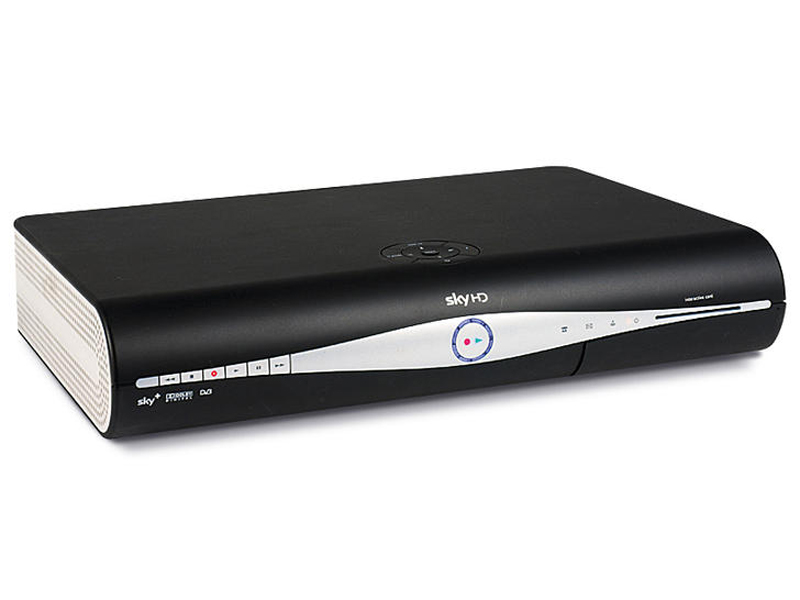How to upgrade your Sky+HD's hard drive
It's easy to add more storage to your Sky box

When Sky HD started nearly three years ago, there were only eight hi-def channels to choose from (including BBC HD). By February 2008 that number had increased to 31.
But in that time the capacity of the internal hard disk drive that the Sky+HD box uses as a recording medium has not been increased proportionately. Odd, given that the price of high-capacity drives has plummeted.
The Sky+HD has a 300GB drive (320GB in the latest models), which was admittedly enormous by 2006 standards. This has been 'partitioned', so that a fixed 140GB of this capacity is reserved for 'Anytime' – the surprisingly useful service that automatically captures high-profile programming Sky thinks you might be interested in.
Only the drive's remaining 160GB is available for your recordings. This may be acceptable for standard def PVRs like Sky+, but hi-def video has a voracious appetite for drive space. You need only schedule a handful of docs or films for it to disappear.
And with all those HD channels now on tap, that 160GB is showing its limitations more than ever. When Sky+ was launched (with a whopping 40GB of capacity) about 10 years ago, it was discovered that you could upgrade the hard drive for more capacity (and so recording time). The same, thankfully, is possible here.
All Sky+ units we're familiar with employ hard drives with a ribbon-cabled interface known as 'IDE' or 'PATA'. Drives with this interface are now obsolete and difficult to obtain – for the benefit of Sky+ users we hope to discuss a workaround in the near future.
Doubling Sky HD capacity
Get daily insight, inspiration and deals in your inbox
Sign up for breaking news, reviews, opinion, top tech deals, and more.
The news for Sky+HD subscribers is much rosier. Their boxes use the newer SATA interface – which is the current mainstream – so there's a wide choice of suitable drives. If you want to use a drive with a capacity of between 300GB and 500GB with your Sky+HD, then you can simply replace the old drive with a new one – following many of the steps here.
Carry out a full system reset (quickly press: [services] 4, 0, 1 [select] and choose option 8) and the replacement drive will be initialised. Sub-500GB drives may be acceptable if the drive in your machine has failed, or you just want a little more capacity.
Hard drives of much greater capacity aren't much more expensive, and if you have access to a reasonably modern PC and are prepared to put in a little extra effort, then you can more than double the capacity of your Sky+HD PVR.
Here, we detail the steps involved in replacing the standard 300GB unit with a 750GB one – in this case a Samsung HD753LJ. Bigger drives are available, but some users have reported problems with drives larger than 1TB (e.g. 1.5TB). This is apparently due to a Sky firmware bug.
You'll keep your existing recordings – important, given that many of the films that Sky has broadcast in HD aren't yet out on Blu-ray. When we carried out our upgrade the programme planner showed 4 per cent remaining capacity. With the new drive that became 74 per cent – with all our recordings intact.
The reason for the disproportionate jump in capacity is because the proportion eaten up by Sky Anytime has not similarly increased; its partition size is unchanged at 140GB. And so with a 750GB drive, 610GB is available for your recordings!
You can't talk about increases in recording time because channel bit rates vary enormously (and that's before you start considering HD's requirements). Sky+ and Sky+HD don't directly use PC disc formats like FAT32 and NTFS. They rely on a proprietary FAT32-based one, known as 'XTVFS', that has been optimised for the efficient storage of the large files associated with TV recordings.
Were you to connect up a Sky+ or drive to a PC, you would not have much luck. The capacity reported in My Computer, if it's seen at all, will be the raw capacity of the drive. But with some free software, known as Copy+ (downloadable from www.skycopyplus.co.uk), on a standard Windows XP or Vista PC you can 'migrate' your recordings (and Anytime content, if desired) from your original drive to the new higher-capacity one.